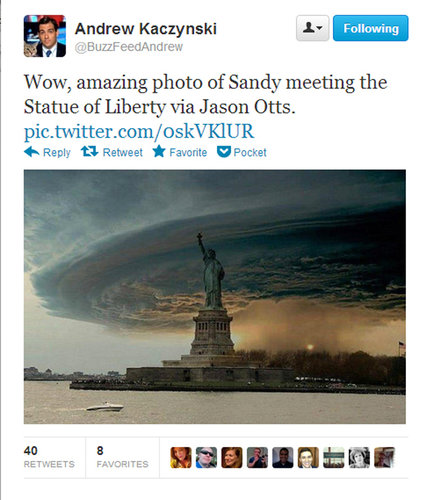You are here
Thu, 2012-11-01 22:27 — Maeryn Obley
 Image: A startling but manufactured image of the giant storm that made the rounds on Twitter and Facebook.
Image: A startling but manufactured image of the giant storm that made the rounds on Twitter and Facebook.
nytimes.com - October 31st, 2012 - Jenna Wortham
During Hurricane Sandy’s peak, Twitter was abuzz with activity, as tens of thousands of people turned to the microblogging service for alerts, updates and real-time reports and photographs of the storm.
Trouble is, not all of it was true.
Deliberate falsehoods, including images showing the Statue of Liberty engulfed in ominous clouds and sharks swimming through waterlogged suburban neighborhoods quickly spread through the service, as did word that power would be shut off for the entire city of New York and that the floor of the New York Stock Exchange had been flooded.
Groups this Group Post belongs to:



Comments
From Michael D. McDonald